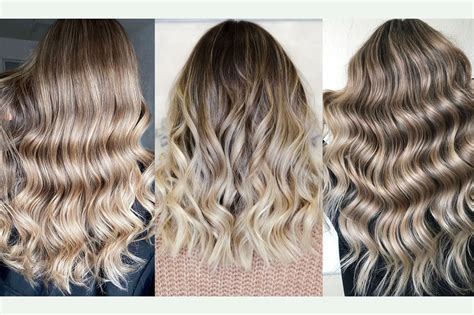With countless hair color techniques available, choosing the perfect one can be overwhelming. Two of the most popular options today are ombre and balayage, each offering unique advantages and drawbacks.

Understanding Ombre
Ombre, French for “shadow,” is a gradual transition from one color to another, typically with a darker shade at the roots and a lighter shade at the ends.
Pros of Ombre:
- Low maintenance: As the hair grows out, the ombré effect remains visible.
- Versatile: Ombre can be customized to suit any hair color or length.
- Trendy: Ombre has been a popular hair trend for several years.
Cons of Ombre:
- Difficult to achieve at home: Ombre requires a skilled colorist to create the desired blend.
- Can appear harsh: If not done properly, ombre can result in a noticeable line between colors.
- May damage hair: The bleaching process required for ombre can weaken hair.
Understanding Balayage
Balayage is a hand-painted hair highlighting technique that creates subtle, sun-kissed highlights. Unlike ombre, balayage does not involve bleaching the entire head of hair.
Pros of Balayage:
- Natural-looking: Balayage mimics the natural highlights that occur in the sun, resulting in a lived-in, effortless look.
- Customized: Colorists can create balayage highlights that blend seamlessly with your natural hair color.
- Less damaging: Balayage uses less bleach than ombre, minimizing hair damage.
Cons of Balayage:
- Time-consuming: Balayage is a more labor-intensive process, taking several hours to complete.
- Can be expensive: Balayage typically requires multiple sessions with a skilled colorist.
- May not be suitable for all hair types: Balayage is not recommended for very dark or damaged hair.
The best hair color technique for you depends on your personal preferences and hair type. Consider the following factors:
- Maintenance: Ombre is low-maintenance, while balayage requires more frequent touch-ups.
- Natural look: Balayage creates a more natural-looking highlight, while ombre is more dramatic.
- Hair damage: Ombre can cause more hair damage than balayage.
- Cost: Balayage is typically more expensive than ombre.
According to the American Academy of Dermatology, both ombre and balayage involve altering the melanin levels in the hair. Ombre uses bleach to reduce melanin, creating a gradual transition, while balayage uses a combination of bleach and dye to create subtle highlights.
Industry experts predict that ombre and balayage will continue to be popular hair color trends in the coming years. However, new techniques are emerging, such as microbalayage, which creates even more delicate highlights, and ombronation, which combines ombre and balayage for a multidimensional effect.
| Feature | Ombre | Balayage |
|---|---|---|
| Technique | Gradual transition from dark to light | Hand-painted highlights |
| Appearance | Dramatic | Natural-looking |
| Maintenance | Low | Requires frequent touch-ups |
| Cost | Typically less expensive | Typically more expensive |
| Hair damage | Can cause more damage | Less damaging |
| Technique | Benefits |
|---|---|
| Ombre | Low maintenance, Versatile, Trendy |
| Balayage | Natural-looking, Customized, Less damaging |
| Technique | Drawbacks |
|---|---|
| Ombre | Difficult to achieve at home, Can appear harsh, May damage hair |
| Balayage | Time-consuming, Can be expensive, May not be suitable for all hair types |
| Technique | Effects on Hair Health |
|---|---|
| Ombre | Can cause substantial hair damage due to extensive bleaching |
| Balayage | Less damaging than ombre, but still involves some bleaching |
Ombre and balayage are both popular hair color techniques that offer unique advantages and drawbacks. Understanding the differences and consulting with a skilled colorist will help you choose the best option for your personal style and hair type.
